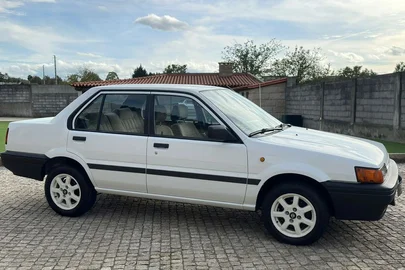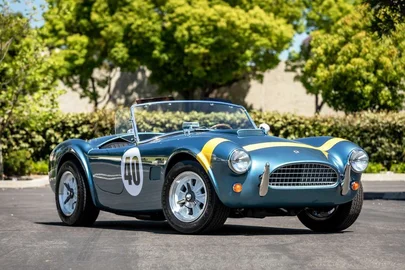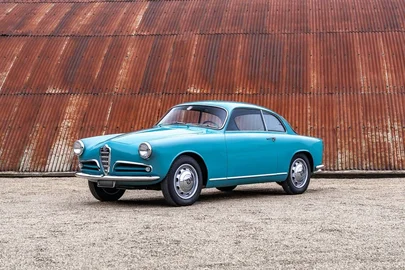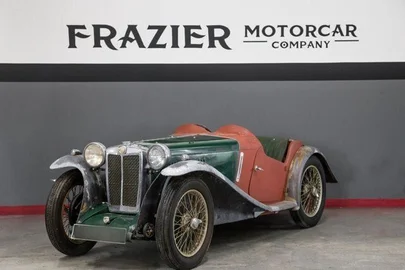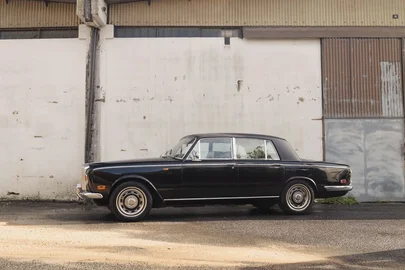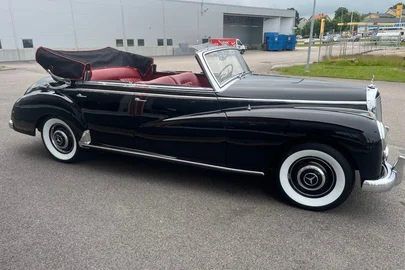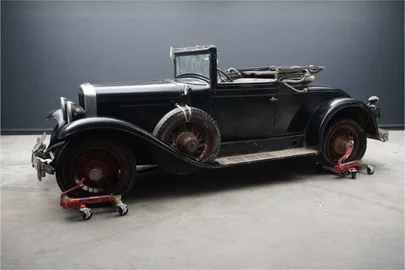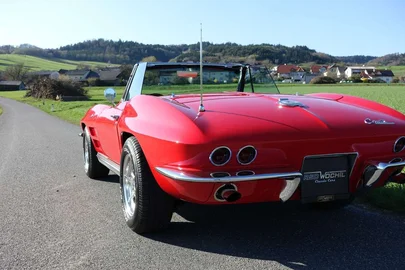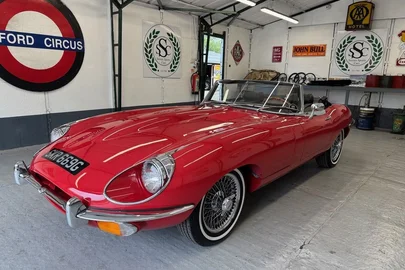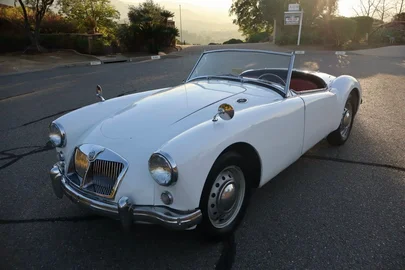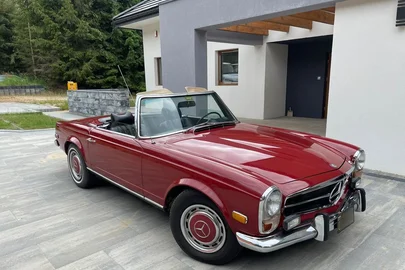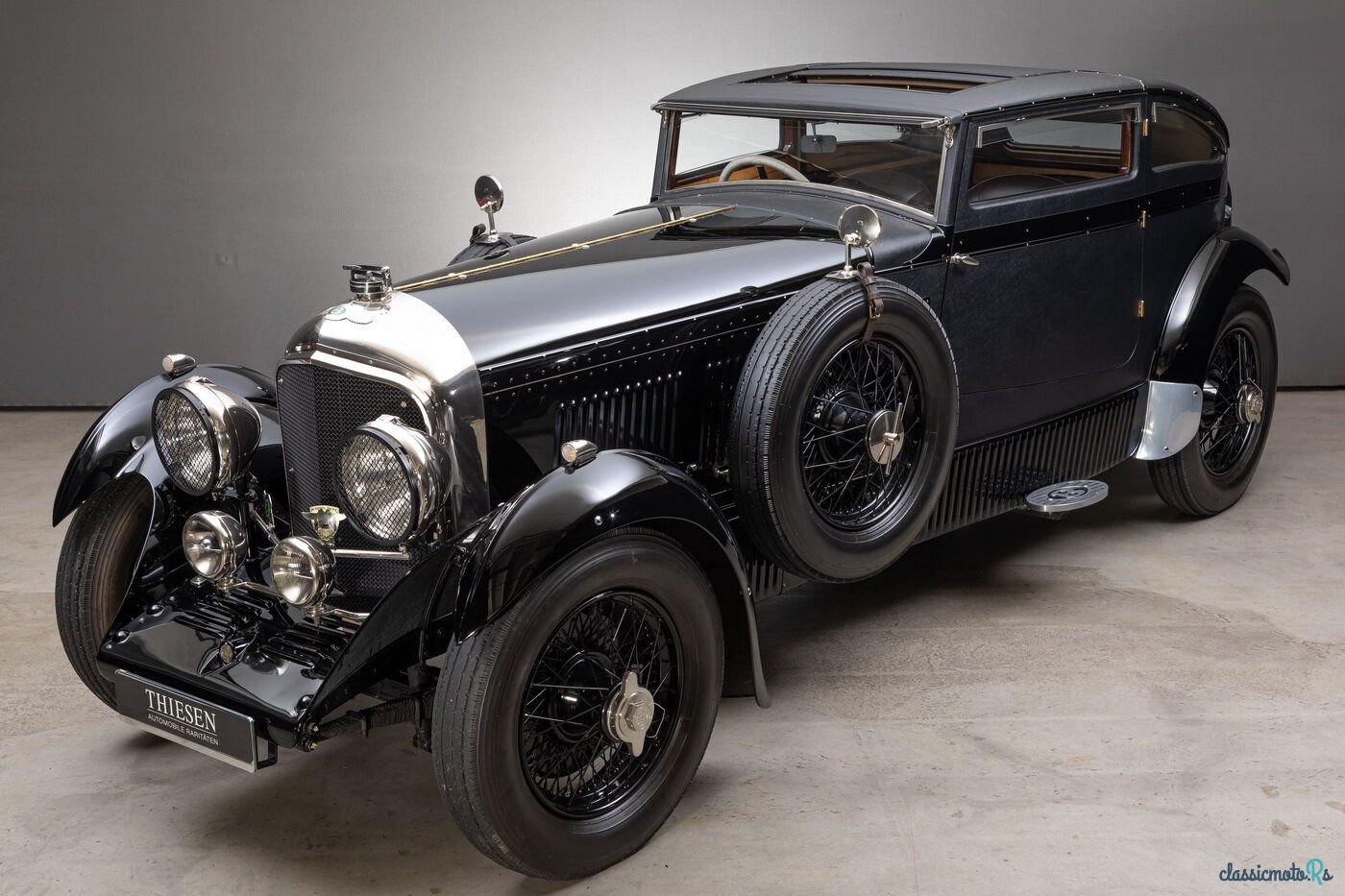
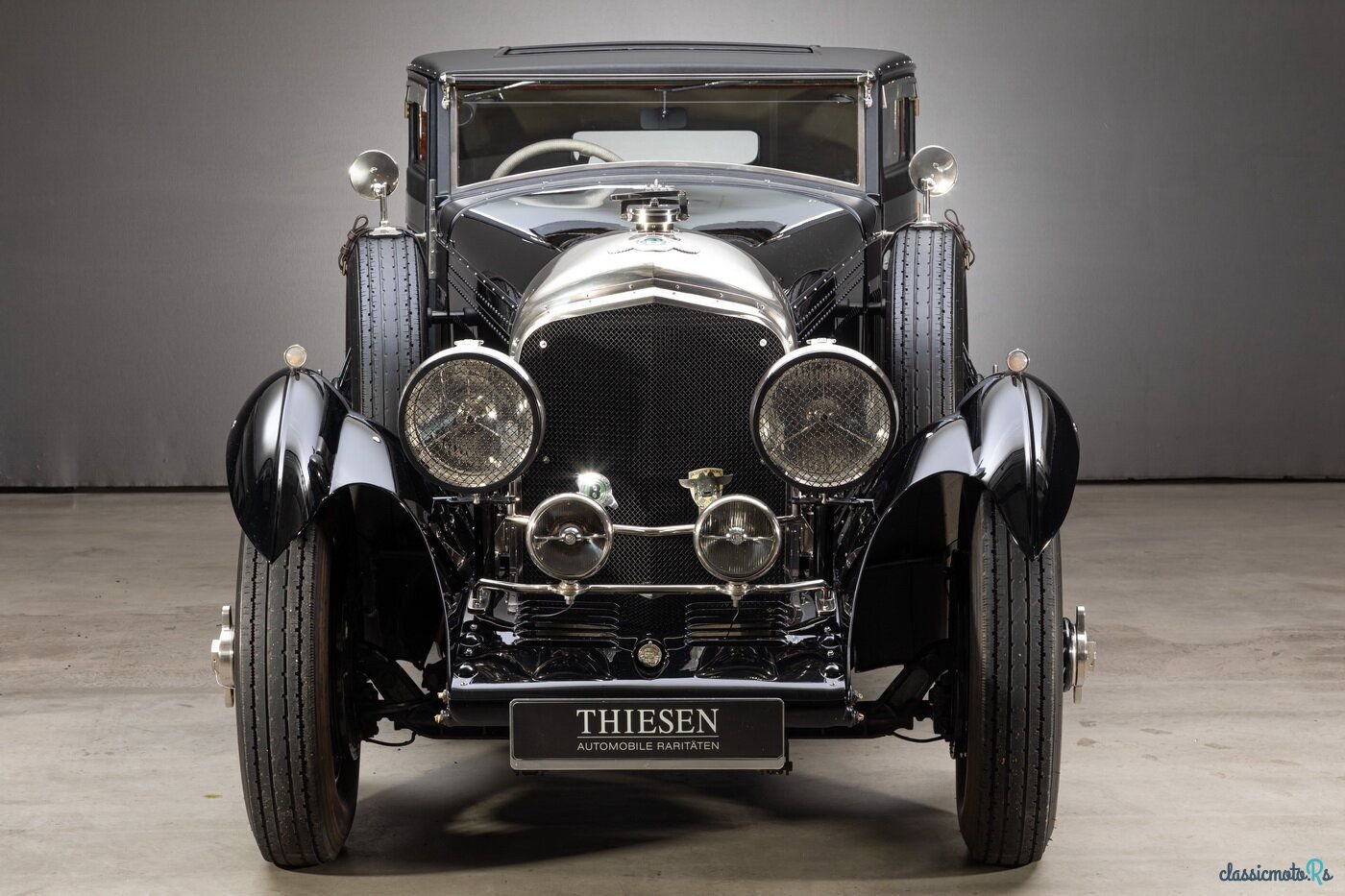
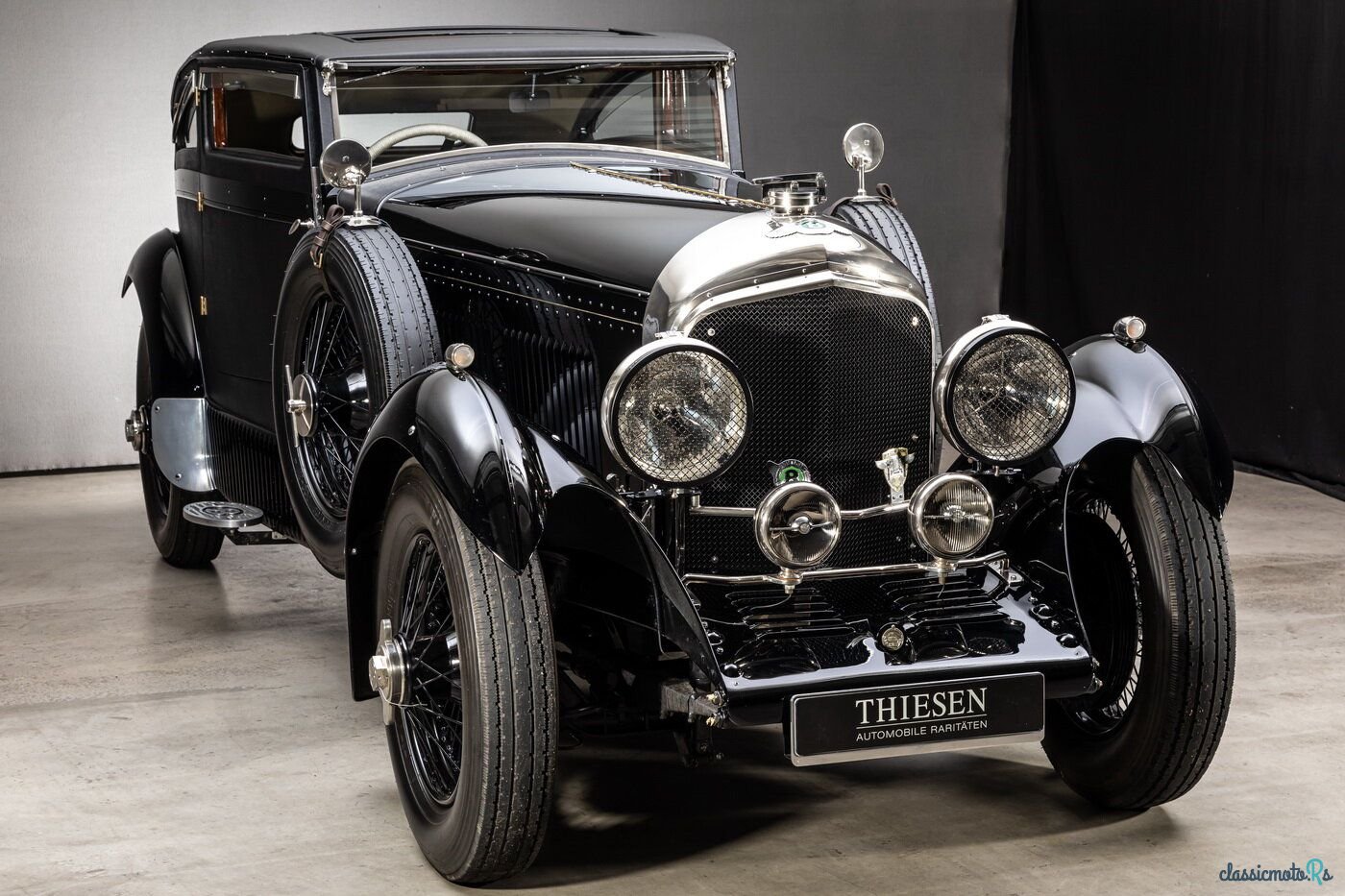
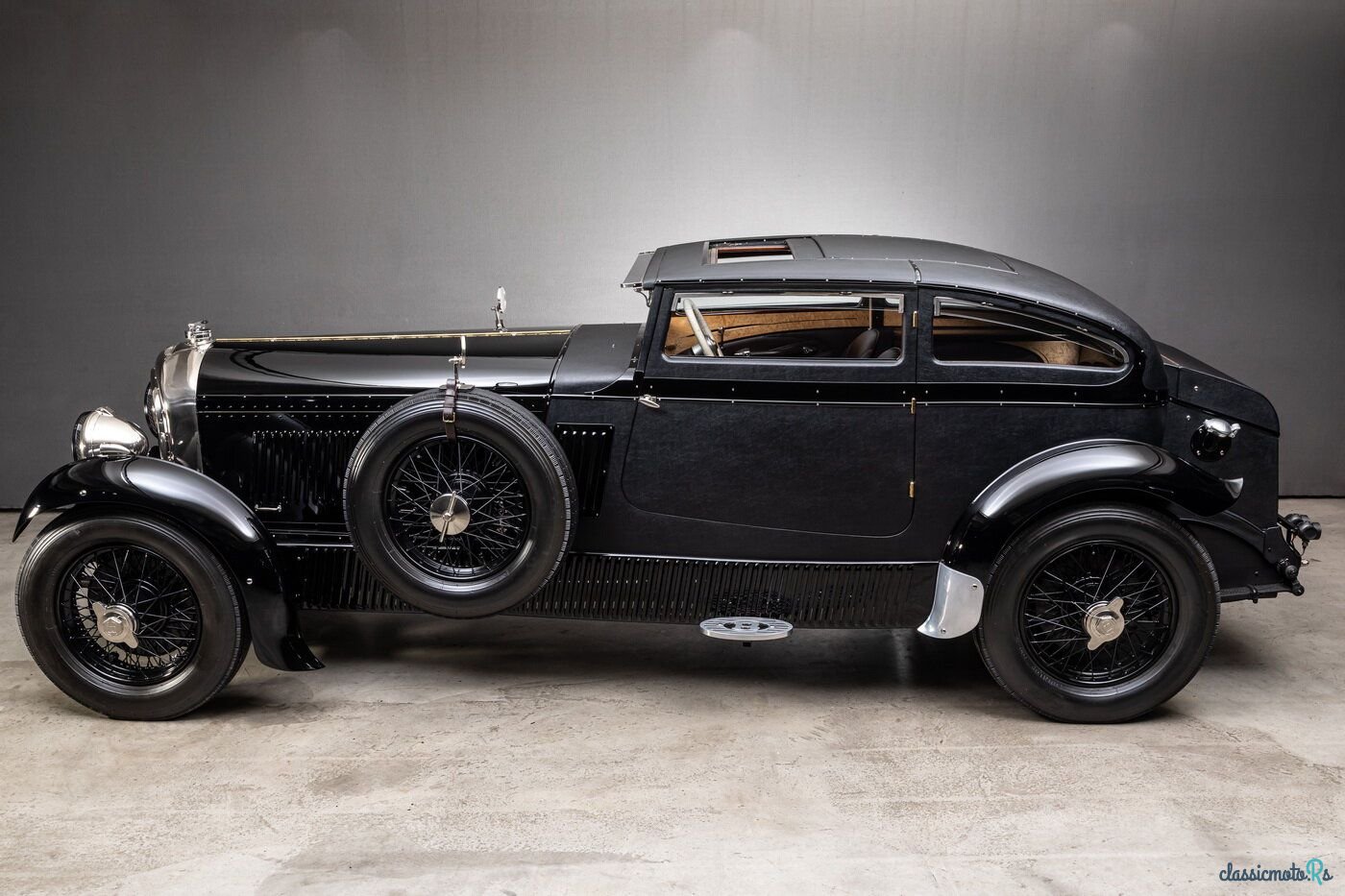
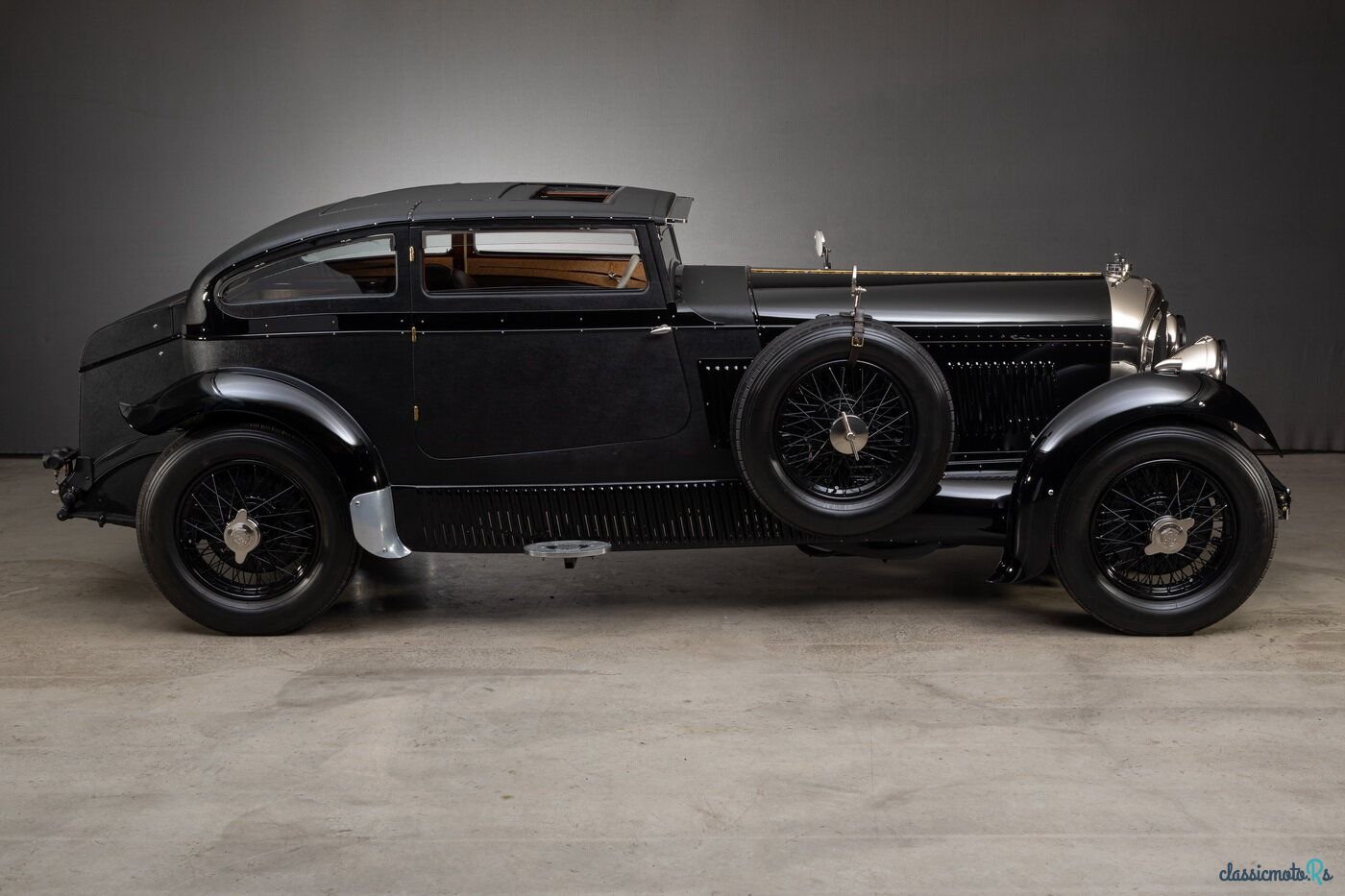

6 photos
1929' Bentley Speed Six
Report This Ad!Rate This!Bookmark This
£385,000Published 19 February 2023ID: TAihlk
Expired
2 years, 10 months ago
2 years, 10 months ago
Information from the owner
Body: Sports Car
Age: 94 years
Exterior color: Blue
Exterior: Fog lamps
Seller's comments about 1929' Bentley Speed Six
- 1 of 5 built "Blue Train" by Petersen Engineering - Built on a 1929 Rolls-Royce Ph. II chassis - A tribute to the era of the "Bentley Boys" - Ultimate performance through optimized technology - Breathtaking body design Description:
Few cars embody the glamour, speed and power of the pre-war Bentley era better than the "Blue Train" Bentley Speed Six. In this carriage Bentley boy Woolf Barnato raced and hit the blue train northbound from the Cote d'Azur to Calais. Woolf Barnato - heir to a vast fortune from the Kimberley diamond mines in South Africa - was the ultimate "Bentley boy". A brilliant sportsman, playboy and generous host, he became chairman of Bentley Motors in 1926. W.O. Bentley considered him the best driver on the team, not least due to his successes for Bentley at "Le Mans" with 3 starts and 3 wins.
Barnato was at a dinner party aboard a yacht near Cannes in March 1930 when the "Blue Train" race came up. Both 'Rover' and 'Alvis' had recently taken the train from St Raphael to Calais. Barnato wasn't impressed, calling the performance "not a big tremor". He bet £200 that driving his Speed Six he could easily beat the train to Calais. The next day at 5:45 p.m., as the “Blue Train” left Cannes station, the race started. During the 185 miles from Cannes to Lyon, Barnato and his co-driver Dale Boum were caught in heavy rain. Around 4am near Auxerre, the team lost some time trying to find an agreed refueling meeting. Despite this setback, thick fog near Paris and a puncture consuming their only spare tyre, Barnato and Bourne finally reached Calais at 10.30am. They had covered over 570 miles at an average speed of 43.43 mph. An impressive result on the dusty and rough roads of the time. His performance was so exceptional that a 2015 Car Magazine repeat drive in a Continental GT3-R just barely surpassed Barnato's 1930 set average speed.
With decades of experience in the restoration of high-quality pre-war Bentleys, the company Petersen Engineering, based in southern England, produced a new edition of the "Blue Train" limited to 5 vehicles. This is a replica of the Speed Six with Gurney Nutting bodywork, a one-off for Woolf Barnato, with which he won the 24 Hours of Le Mans three times. The chassis comes from a Rolls-Royce Phantom II built in 1929. A Rolls-Royce/ Bentley B20 engine and a Tremec gearbox were installed. The technology was optimized by installing power steering, a brake system with brake booster, etc. This "Blue Train" recreation embodies the spirit and impressive design of the original, but is undoubtedly even more exciting to drive with its powerful engine. The car combines craftsmanship at the highest level with fantastic driving characteristics. Acquiring the vehicle presented here is a rare opportunity for true Bentley enthusiasts!
Furnishing:
Leather interior, large sunroof, rear suitcase, auxiliary headlights, nickel-plated gloss work, contemporary sports seats for driver and front passenger, root wood, etc.;
Optimized technology: power steering, brake system, brake booster, Tremec gearbox, etc.
Body:
Body Aluminum 2 + 1 seater, based on Rolls-Royce Phantom II chassis from 1929
Drive:
8-cylinder in-line with 6552 liters displacement, approx. 180 hp,
Tremec 5-speed manual gearbox, Rolls-Royce/ Bentley B20 engine
- 1 of 5 "Blue Train" built by Petersen Engineering- Constructed on a 1929 Rolls-Royce Ph. II Chassis- A tribute to the "Bentley Boys" era- Ultimate performance due to modified technics- Stunning coachwork design Description:
Few cars embody the glamour, speed and power of the pre-war Bentley era better than the "Blue Train" Bentley Speed Six. In this car, Bentley boy Woolf Barnato raced and beat the blue train northwards from the Cote d'Azur to Calais. Woolf Barnato - heir to a huge fortune from the Kimberley diamond mines in South Africa - was the ultimate "Bentley boy". A brilliant sportsman, playboy and generous host, he became chairman of Bentley Motors in 1926. W.O. Bentley considered him the best driver in the team, not least because of his successes for Bentley at "Le Mans" with 3 starts and 3 wins.
Barnato was at a dinner party on board a yacht near Cannes in March 1930 when the "Blue Train" race came up. Both "Rover" and "Alvis" had recently beaten the St Raphael to Calais train. Barnato was not impressed, calling the performance "no great shakes". He bet £200 that he could beat the train to Calais with ease at the wheel of his Speed Six. The next day at 5.45pm, as the "Blue Train" left Cannes station, the race started. During the 185 miles from Cannes to Lyon, Barnato and his co-driver Dale Boum were caught in heavy rain. Around 4am, the team lost some time near Auxerre while searching for an agreed refueling meeting. Despite this setback, thick fog near Paris and a puncture that used up their only spare tire, Barnato and Bourne finally reached Calais at 10.30am. They had covered over 570 miles at an average speed of 43. 43 miles per hour. An impressive result on the dusty and rough roads of the time. His performance was so exceptional that a repeat run by "Car Magazine" in 2015 in a Continental GT3-R only just beat Barnato's average speed set in 1930.
With decades of experience in the restoration of high-quality pre-war Bentleys, Petersen Engineering, a company based in southern England, produced a new edition of the "Blue Train" limited to 5 vehicles. The car completely built up new in the style of the Speed Six with Gurney Nutting coachwork, a one-off for Woolf Barnato, with whom he had won the 24 Hours of Le Mans three times. The chassis was taken from a Rolls-Royce Phantom II built in 1929 and a Rolls-Royce/ Bentley B20 engine and Tremec gearbox were fitted. The technology was optimized by installing power steering, a brake system with brake booster, etc.
This "Blue Train" recreation embodies the spirit and stunning design of the original, but is undoubtedly even more exciting to drive with its powerful engine. The car combines craftsmanship of the highest level with fantastic driving characteristics. Acquiring the car presented here is a rare opportunity for true Bentley enthusiasts!
Facilities:
Leather interior, large sunroof, rear trunk, auxiliary headlights, gloss work nickel-plated, contemporary sports seats for driver and passenger, root woods, etc.;
Optimized technics: power steering, brake system, brake booster, Tremec transmission, etc.
Coachwork:
Body aluminum 2 + 1 seater, base 1929 Rolls-Royce Phantom II
Engine:
In-line 8-cylinder with 6552 liters displacement, approx. 180 hp, Tremec 5-speed manual gearbox, Rolls-Royce/ Bentley B20 engine
Few cars embody the glamour, speed and power of the pre-war Bentley era better than the "Blue Train" Bentley Speed Six. In this carriage Bentley boy Woolf Barnato raced and hit the blue train northbound from the Cote d'Azur to Calais. Woolf Barnato - heir to a vast fortune from the Kimberley diamond mines in South Africa - was the ultimate "Bentley boy". A brilliant sportsman, playboy and generous host, he became chairman of Bentley Motors in 1926. W.O. Bentley considered him the best driver on the team, not least due to his successes for Bentley at "Le Mans" with 3 starts and 3 wins.
Barnato was at a dinner party aboard a yacht near Cannes in March 1930 when the "Blue Train" race came up. Both 'Rover' and 'Alvis' had recently taken the train from St Raphael to Calais. Barnato wasn't impressed, calling the performance "not a big tremor". He bet £200 that driving his Speed Six he could easily beat the train to Calais. The next day at 5:45 p.m., as the “Blue Train” left Cannes station, the race started. During the 185 miles from Cannes to Lyon, Barnato and his co-driver Dale Boum were caught in heavy rain. Around 4am near Auxerre, the team lost some time trying to find an agreed refueling meeting. Despite this setback, thick fog near Paris and a puncture consuming their only spare tyre, Barnato and Bourne finally reached Calais at 10.30am. They had covered over 570 miles at an average speed of 43.43 mph. An impressive result on the dusty and rough roads of the time. His performance was so exceptional that a 2015 Car Magazine repeat drive in a Continental GT3-R just barely surpassed Barnato's 1930 set average speed.
With decades of experience in the restoration of high-quality pre-war Bentleys, the company Petersen Engineering, based in southern England, produced a new edition of the "Blue Train" limited to 5 vehicles. This is a replica of the Speed Six with Gurney Nutting bodywork, a one-off for Woolf Barnato, with which he won the 24 Hours of Le Mans three times. The chassis comes from a Rolls-Royce Phantom II built in 1929. A Rolls-Royce/ Bentley B20 engine and a Tremec gearbox were installed. The technology was optimized by installing power steering, a brake system with brake booster, etc. This "Blue Train" recreation embodies the spirit and impressive design of the original, but is undoubtedly even more exciting to drive with its powerful engine. The car combines craftsmanship at the highest level with fantastic driving characteristics. Acquiring the vehicle presented here is a rare opportunity for true Bentley enthusiasts!
Furnishing:
Leather interior, large sunroof, rear suitcase, auxiliary headlights, nickel-plated gloss work, contemporary sports seats for driver and front passenger, root wood, etc.;
Optimized technology: power steering, brake system, brake booster, Tremec gearbox, etc.
Body:
Body Aluminum 2 + 1 seater, based on Rolls-Royce Phantom II chassis from 1929
Drive:
8-cylinder in-line with 6552 liters displacement, approx. 180 hp,
Tremec 5-speed manual gearbox, Rolls-Royce/ Bentley B20 engine
- 1 of 5 "Blue Train" built by Petersen Engineering- Constructed on a 1929 Rolls-Royce Ph. II Chassis- A tribute to the "Bentley Boys" era- Ultimate performance due to modified technics- Stunning coachwork design Description:
Few cars embody the glamour, speed and power of the pre-war Bentley era better than the "Blue Train" Bentley Speed Six. In this car, Bentley boy Woolf Barnato raced and beat the blue train northwards from the Cote d'Azur to Calais. Woolf Barnato - heir to a huge fortune from the Kimberley diamond mines in South Africa - was the ultimate "Bentley boy". A brilliant sportsman, playboy and generous host, he became chairman of Bentley Motors in 1926. W.O. Bentley considered him the best driver in the team, not least because of his successes for Bentley at "Le Mans" with 3 starts and 3 wins.
Barnato was at a dinner party on board a yacht near Cannes in March 1930 when the "Blue Train" race came up. Both "Rover" and "Alvis" had recently beaten the St Raphael to Calais train. Barnato was not impressed, calling the performance "no great shakes". He bet £200 that he could beat the train to Calais with ease at the wheel of his Speed Six. The next day at 5.45pm, as the "Blue Train" left Cannes station, the race started. During the 185 miles from Cannes to Lyon, Barnato and his co-driver Dale Boum were caught in heavy rain. Around 4am, the team lost some time near Auxerre while searching for an agreed refueling meeting. Despite this setback, thick fog near Paris and a puncture that used up their only spare tire, Barnato and Bourne finally reached Calais at 10.30am. They had covered over 570 miles at an average speed of 43. 43 miles per hour. An impressive result on the dusty and rough roads of the time. His performance was so exceptional that a repeat run by "Car Magazine" in 2015 in a Continental GT3-R only just beat Barnato's average speed set in 1930.
With decades of experience in the restoration of high-quality pre-war Bentleys, Petersen Engineering, a company based in southern England, produced a new edition of the "Blue Train" limited to 5 vehicles. The car completely built up new in the style of the Speed Six with Gurney Nutting coachwork, a one-off for Woolf Barnato, with whom he had won the 24 Hours of Le Mans three times. The chassis was taken from a Rolls-Royce Phantom II built in 1929 and a Rolls-Royce/ Bentley B20 engine and Tremec gearbox were fitted. The technology was optimized by installing power steering, a brake system with brake booster, etc.
This "Blue Train" recreation embodies the spirit and stunning design of the original, but is undoubtedly even more exciting to drive with its powerful engine. The car combines craftsmanship of the highest level with fantastic driving characteristics. Acquiring the car presented here is a rare opportunity for true Bentley enthusiasts!
Facilities:
Leather interior, large sunroof, rear trunk, auxiliary headlights, gloss work nickel-plated, contemporary sports seats for driver and passenger, root woods, etc.;
Optimized technics: power steering, brake system, brake booster, Tremec transmission, etc.
Coachwork:
Body aluminum 2 + 1 seater, base 1929 Rolls-Royce Phantom II
Engine:
In-line 8-cylinder with 6552 liters displacement, approx. 180 hp, Tremec 5-speed manual gearbox, Rolls-Royce/ Bentley B20 engine
